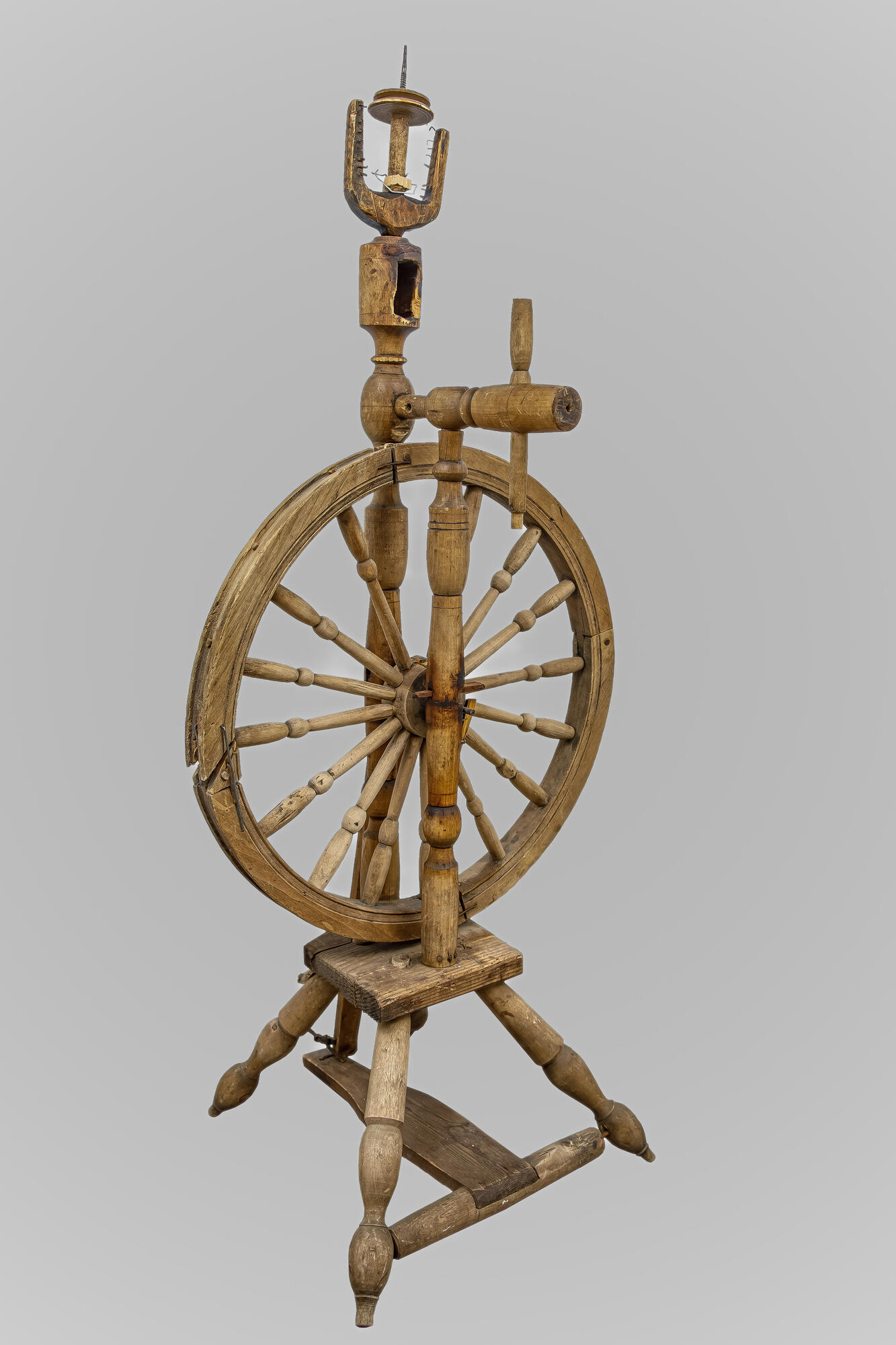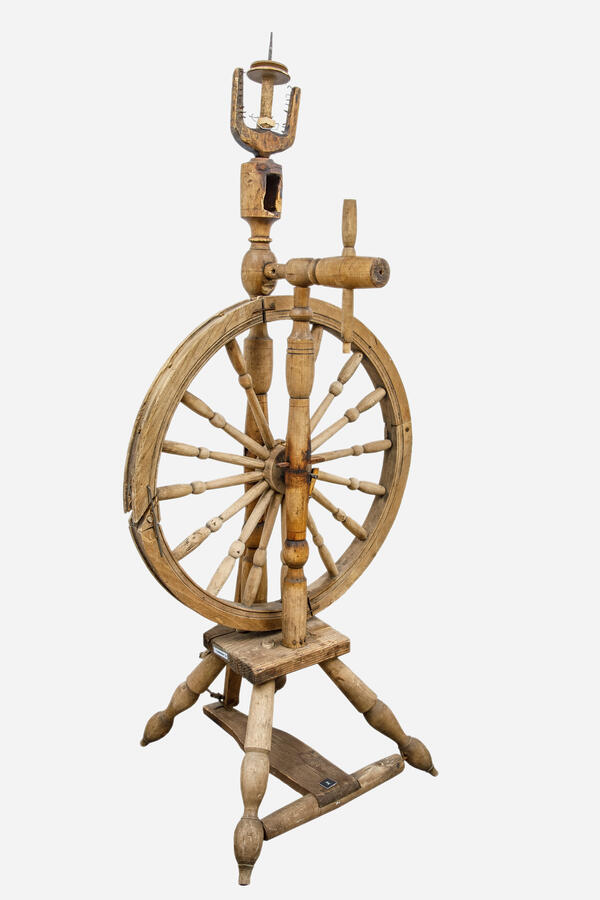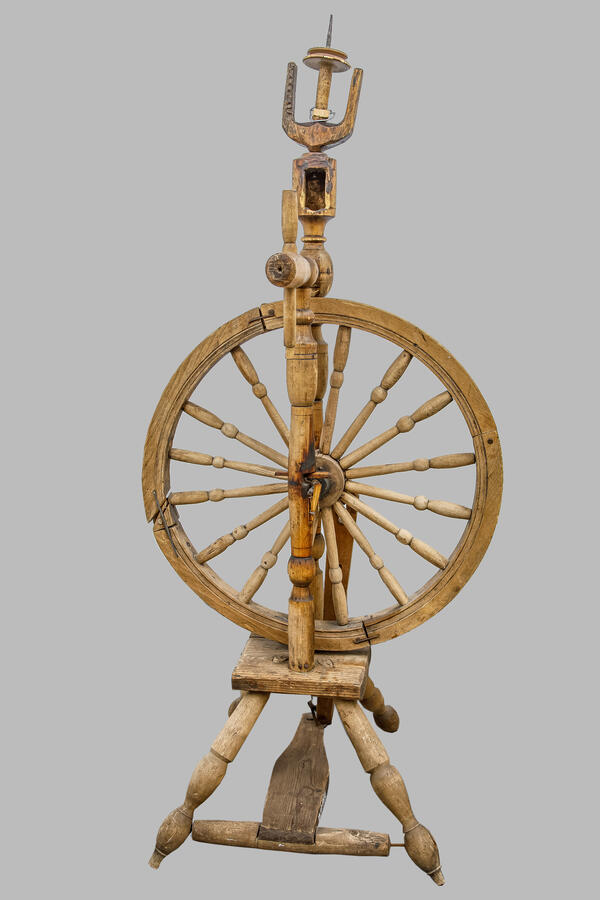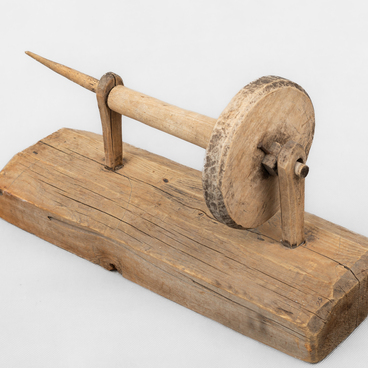Spinning was traditionally women’s work. In Old Rus, this device was called a “pryaslitse”. From autumn until Lent, spinners worked until midnight in rooms with low ceilings illuminated by a rushlight.
Each spinning wheels that has survived to this day from ancient times is unique. Each has its own peculiarity. Apparently, women who used spinning wheels tried their best to make the job convenient and easy and used their imagination and creativity to decorate their spinning wheels.
To make spinning wheels, Russian artisans used various types of wood, such as maple, aspen, birch and linden. The upper part of the spinning wheel was called the “womb”. The side posts were designed to support the rotating part. They were movable to install or remove the bobbin.
The rotating head was U-shaped and had hooks on the parts called maidens. The spinner had the opportunity to regulate the speed of work. The block was installed on the head — it was responsible for the speed of twisting the thread. The brake device put pressure on the bobbin and thereby slowed down its rotation.
A belt tensioner was also provided. The greater the tension was, the faster the wheel rotated. The speed of the wheel rotation affected the speed of winding the thread onto the spool. If the spinning wheel loosened the belt, the wheel began to turn slower and the thread wound on the spool slower and became more twisted.
Spinning and weaving were the most labor-intensive of all the types of work that peasant women had to perform. Women were engaged in spinning for almost five months a year — from November to March. A distaff was considered a valuable gift: the father gave it to his daughter, the groom — to the bride, and the husband — to his wife.
In some regions, according to custom, the groom had to make a distaff with his own hands, and break the old one given by the parents as a sign of engagement. A beautiful distaff was something to be proud of. The owner took it to the party so that everyone could see the carved or painted decoration.
This spinning wheel from the collection of the Uray City Historical Museum was made in the second half of the 20th century. An artisan from Western Siberia used the turning technique to create this tool.
Each spinning wheels that has survived to this day from ancient times is unique. Each has its own peculiarity. Apparently, women who used spinning wheels tried their best to make the job convenient and easy and used their imagination and creativity to decorate their spinning wheels.
To make spinning wheels, Russian artisans used various types of wood, such as maple, aspen, birch and linden. The upper part of the spinning wheel was called the “womb”. The side posts were designed to support the rotating part. They were movable to install or remove the bobbin.
The rotating head was U-shaped and had hooks on the parts called maidens. The spinner had the opportunity to regulate the speed of work. The block was installed on the head — it was responsible for the speed of twisting the thread. The brake device put pressure on the bobbin and thereby slowed down its rotation.
A belt tensioner was also provided. The greater the tension was, the faster the wheel rotated. The speed of the wheel rotation affected the speed of winding the thread onto the spool. If the spinning wheel loosened the belt, the wheel began to turn slower and the thread wound on the spool slower and became more twisted.
Spinning and weaving were the most labor-intensive of all the types of work that peasant women had to perform. Women were engaged in spinning for almost five months a year — from November to March. A distaff was considered a valuable gift: the father gave it to his daughter, the groom — to the bride, and the husband — to his wife.
In some regions, according to custom, the groom had to make a distaff with his own hands, and break the old one given by the parents as a sign of engagement. A beautiful distaff was something to be proud of. The owner took it to the party so that everyone could see the carved or painted decoration.
This spinning wheel from the collection of the Uray City Historical Museum was made in the second half of the 20th century. An artisan from Western Siberia used the turning technique to create this tool.




